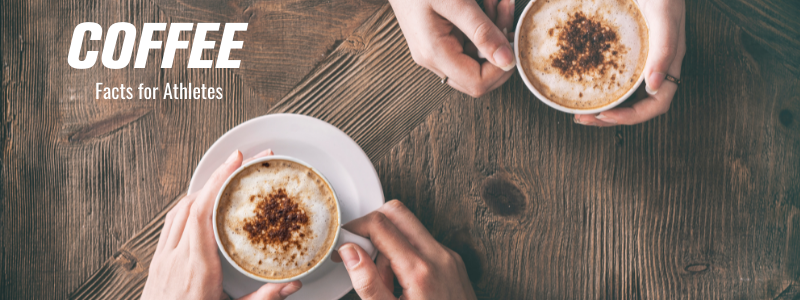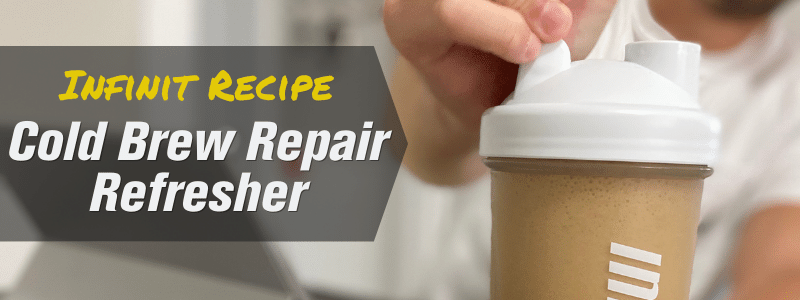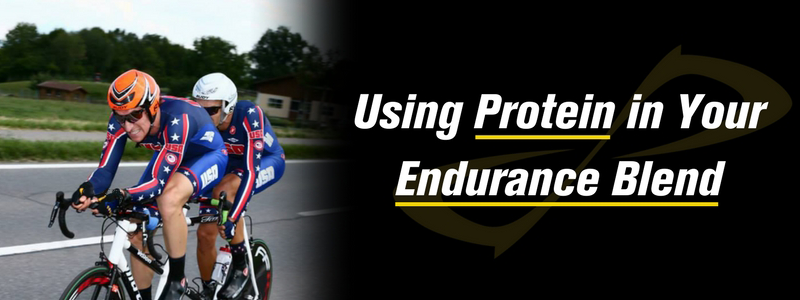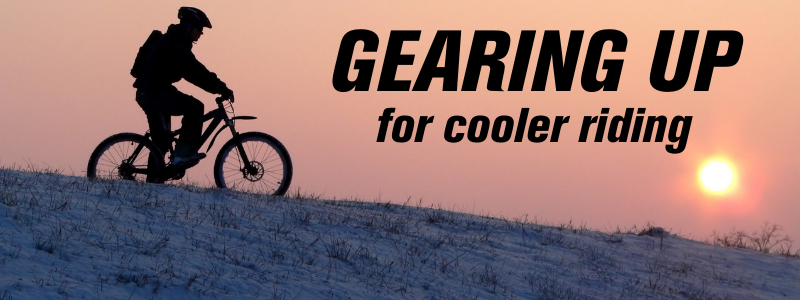Coffee Facts for Athletes
- 21 Oct 2022

French Press, espresso, pour over, cappuccino, aero-press, cold brew, macchiato, latte, and the list goes on. There’s no doubt there are more than a few ways to make and enjoy your coffee. And you’d be hard pressed (bad pun) to find an athlete who doesn't enjoy starting off the day with a good cup of joe.
Coffee is one of the most popular drinks in the world and athletes have long been linked with consuming copious amounts of coffee. Before we talk about how coffee can benefit performance AND your overall health, let’s take a look at a few fun facts about coffee.

10 Fun Facts about Coffee
- Coffee dates back to the 800’s in Ethiopia when it is said that a goat herder named Kaldi noticed his goats had an increase in energy after eating coffee cherries.
- Italy is widely recognized as one of, if not the best coffee bledning countries on earth. Interesting fact regarding Italy is that Italy is not a coffee-producing country. They get their beans from places like Brazil, Ethiopia, and Indonesia.
- Coffee is grown in the “Coffee Belt” which is primarily made-up of tropical regions including Mexico, central and south America, much of Africa, and Indonesia.

- Brazil produces the most coffee in the world.
- Kopi Luwak is the world's most exclusive (and most expensive) coffee, with the price range around €1300 per Kg
- Europe accounted for 33% of global coffee consumption in 2020/21, amounting to an estimated 3.244 million tonnes of coffee this makes Europe the largest coffee market in the world.
- The leading country in per capita consumption in the world is Luxembourg, where the average annual coffee consumption is over 11kg per capita.
- Coffee beans are actually seeds from the coffee cherry which can technically be classified as a fruit.
- Portugal is the leader when it comes to coffee shop concentration. An impressive 41.6 coffee shops per 10,000 people can be found in Portugal,
- Light roast coffee actually has MORE caffeine than a dark roast coffee such as a French Roast or Italian Roast. Most people think since dark roast coffee tastes stronger that it has more caffeine. But the high temperatures used in these very dark roasted coffees, can actually result in a lower caffeine content.
Cyclists and triathletes have been known to incorporate a coffee shop stop for a mid-ride pick-me-up. Crossfit athletes and other gym-goers have also been known to pre-load with a cup of coffee, or even have a thermos by their side during their early morning strength session.
So what’s all of the hype about when it comes to coffee? Is it just something we simply enjoy because of the flavor, aroma, or it’s energizing effects? Or is there something more behind the bean that really impacts athletic performance?
Caffeine is the Crux
The potential performance benefits of coffee come from naturally occurring caffeine found in the coffee bean.

A typical cup of coffee is usually said to be about 100 mg of caffeine. This can really vary widely though depending on how strong the coffee is brewed. For example 236 ml of McDonalds coffee has about 73 mg of caffeine whereas Starbucks is said to have between 130 mg (dark roast) to 180 mg (blonde/light roast) per 236ml - that’s up to 100 mg MORE than McDonalds and just goes to show much it can vary.
Other forms of coffee such as espresso, typically have less caffeine but also contain less water and are typically stronger. A typical shot of espresso from many of the major coffee shops in the Europe are usually around 63 mg each. A small Nespresso (or similar) espresso capsule will contain between 55 - 85 mg each.
Types of Coffee
There are actually two different types or species of coffee: Coffea Arabica (often just referred to as “Arabica”), and Coffea Canephora more commonly referred to as “Robusta”.
Arabica coffee tends to be higher quality with the ability to take on unique flavor profiles depending on where the coffee is grown. Robusta coffee is commonly found in instant coffee, some espressos, as well some larger commercial coffee products such as Foldgers and Maxwell House. Typically if the ingredients just say “coffee” then there is a good chance it could be Robusta where as if it’s Arabica coffee, it will usually say “Arabica Coffee” somewhere on the package.
Robusta coffee is generally cheaper, however, it does contain more caffeine than Arabica coffee.
Methods of Preparation
In Europe, the most common method for brewing is French Press. French press coffee maker is a simple device that makes full-flavored coffee.
Other method widely used, especially in Germany is the "Drip" method. Drip coffee making is the method typically used by home-brewing coffee pots, in which a filter is used to sieve out coffee grinds.
Italians on other hand will typically prepare coffee by expressing or forcing out a small amount of nearly boiling water under pressure through finely ground coffee beans, making their amazing Espresso.

The Performance Perk
Caffeine can improve performance in a number of different ways and may vary depending on the type of activity.
1. Improved Mental Alertness
No matter what type of athlete you are or what activity you might do, caffeine can give you that mental focus to keep pushing and stay focused.
- This heightened alertness can be helpful on long multiple hour events where the mind can start to wonder.
- The extra focus can also help you push through that last rep during strength training workouts.
- While mountain biking or trail running, mental alertness is key to keeping your eyes on the trail ahead so you stay upright and avoid injury.
- During very long ultra-endurance events that are 24 hours or longer (e.g. ultra marathons, adventure races), caffeine’s stimulant effects can literally help keep the competitor awake and block the sensation of tiredness and fatigue.
2. Reduce Perceived Effort
Caffeine can make you feel like you are not working as hard, allowing you to push yourself harder during endurance activity. This has been studied multiple times dating back to initial studies in the late 1970’s with younger adults (Costil), repeated in 2005 with older adults (Norager), and reviewed by Sports Dietitian Louis Burke in 2008 confirming strong evidence for caffeine to improve performance due to a reduced RPE (rating of perceived effort).
A study published in 2013 in the European Journal of Applied Physiology showed a lower RPE during a 30 minute constant load cycling session. They looked at overall RPE as well RPE for breathing and legs and on numerous occasions during as well as at the end of the 30 minutes, RPE was lower in the caffeinated group.
3. Enhanced Contractile Force and Increased Calcium Availability in the Muscle
A 2009 article by Mark Tarnopolsky looked at the direct effects of caffeine on the muscle itself as opposed to the central nervous system (CNS) which contributes to the positive effects of caffeine on mental alertness and reducing RPE.
“Together, these studies suggest that caffeine can enhance contractile force during submaximal contractions by potentiating calcium release from the ryanodine receptor, not by altering sarcoplasmic excitability.” (Tarnopolsky 2009)
4. Increased Fat Metabolism?
Early studies (Costil 1979, Ivy 1979, and Spriet 1992) suggested that caffeine increased fat burning which may act as an additional fuel source in longer sustained endurance activity, sparing muscle glycogen to be used later on in the workout or race. The levels of caffeine were moderate to high at 6-9 mg/kg of body weight (409 - 614 mg for a 68 kg individual).
More recent studies from the 90's and 200’s have suggested that this may not in fact be the reason for caffeine’s beneficial effects on endurance performance and that the above mentioned factors will have a greater effect on caffeine’s benefit on performance.

More isn’t always better
When it comes to coffee and caffeine, more isn’t always better.
Your body can build up a tolerance to caffeine which can reduce the physiological effects that can improve performance. Generally speaking, those that consume less caffeine on a day to day basis (little to none), will likely need less caffeine to get the positive effects, whereas someone who regularly drinks multiple cups of coffee, may require a little more to get those same effects.
2-5 mg/kg (milligrams per kilogram of body weight) of caffeine has been shown to be the amount needed to promote a positive, beneficial response. For the 68 kg individual, that is going to be about 136 - 341 mg total) which would be about 1-4 cups of coffee depending on how strongly it’s brewed.
You can consume this entire amount immediately prior to activity (15-60 minutes before) OR you can split it up and consume approximately half of the caffeine prior to starting and then continue with additional caffeine during training and racing, as is often common with long endurance events.
“Non-Responders”
It’s worth noting that there may be some individuals that don’t get these benefits from caffeine. They are often referred to as “non-responders” and it has to do with certain genetics that result in these individuals not getting the same traditional effects of caffeine that most people get.
And while some don’t respond at all to caffeine, others are much more sensitive to the effects of caffeine. Individuals that are sensitive to caffeine often experience more of the negative side effects such as jitteriness, rapid heart rate, and insomnia or the inability to fall asleep. Those that are sensitive to caffeine, will want to minimize their total caffeine intake to avoid the unwanted side-effects.
As we get older, caffeine can have longer processing times, making some individuals become more sensitive to the effects of caffeine as they age.

But Wait. Doesn’t Coffee Dehydrate You??
Caffeine is sometimes thought to be a diuretic by many, meaning that it causes you to lose and eliminate body water leading to dehydration. However, this is likely not the case most of the time. Particularly with coffee and other caffeinated drinks, the fact that you are consuming fluid along with caffeine typically negates any diuretic effects.
There may be some diuretic effects in certain cases:
- When high doses of caffeine are consumed
- When a higher dose of caffeine is consumed without fluid (e.g. a caffeine pill with minimal water)
- For individuals that are not accustomed to caffeine that consumed moderate to higher dose
Caffeine Metabolism
It only takes about 45 minutes for caffeine to fully get in your system. So it’s a good idea to time your intake appropriately, especially if you are looking for the maximum performance benefit prior to a workout or competition.
Although it gets in your system fast, caffeine lingers around in your body for several hours after consumption. On average, the half-life of caffeine is 3-7 hours. This means that half of the amount consumed is still present after this time. So if you consumed 200 mg at 6:00 am before your morning workout, you will still have 100 mg in your system between 9:00 am and 1:00 pm.
For those that find they struggle to sleep after an afternoon cup of coffee, it’s very possible that the caffeine is still in their system as they are trying to wind down and fall asleep.
INFINIT Offerings
INFINIT has you covered if it comes to coffee. We have our amazing Cold Brew product with its versatile range of application. Perfect for an easy morning boost or a nutritious pick-me-up throughout the day.
Cold Brew
INFINIT’s Cold Brew contains just a few simple ingredients including premium whey protein isolate, organic Arabica coffee, and a touch of cream and sweetness. INFINIT’s Cold Brew can be mixed with water for an easy on the go coffee anywhere, whether you’re on the trails hiking, on-the-go traveling, or just need something easy to mix-up before your morning workout.
Resources:
- “21 Surprising Coffee Facts That Will Perk Up Your Afternoon” https://www.goodhousekeeping.com/health/diet-nutrition/a30303/facts-about-coffee/
- Burke, L. “Caffeine and Sports Performance” https://pubmed.ncbi.nlm.nih.gov/19088794/
- John’s Hopkins Medicine “9 Reasons Why (the right amount) of Coffee is Good for You” https://www.hopkinsmedicine.org/health/wellness-and-prevention/9-reasons-why-the-right-amount-of-coffee-is-good-for-you
- L G Killen “Effects of caffeine on session ratings of perceived exertion” https://pubmed.ncbi.nlm.nih.gov/22926324/#:~:text=Caffeine%20resulted%20in%20a%20significantly,(20%20and%2030%20min).
- Rush “Health Benefits of Coffee” https://www.rush.edu/health-wellness/discover-health/health-benefits-coffee
- Southward, Kyle “The Effect of Acute Caffeine Ingestion on Endurance Performance: A Systematic Review and Meta-Analysis” https://pubmed.ncbi.nlm.nih.gov/29876876/
- Spriet, Lawrence “Exercise and Sport Performance with Low Doses of Caffeine” https://www.ncbi.nlm.nih.gov/pmc/articles/PMC4213371/
- Tarnopolsky “Effect of caffeine on the neuromuscular system — potential as an ergogenic aid” https://cdnsciencepub.com/doi/10.1139/H08-121
- “The 8 Most Popular Packaged Coffee Brands in America” https://www.eatthis.com/most-popular-packaged-coffee-brands/
- “This History of Coffee” https://www.ncausa.org/about-coffee/history-of-coffee
- "What is the demand for the coffee on the European market?" https://www.cbi.eu/market-information/coffee/trade-statistics
- "Making coffee European way: 4 facts you should know about oversea coffee" https://www.countdowntoredcups.com/news/making-coffee-european-way/






